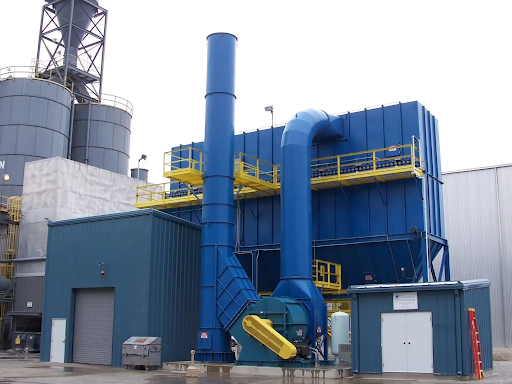Common Types of Dust Control Solutions and Their Effectiveness

Effective dust control is crucial in industrial environments to protect worker health, ensure equipment longevity, comply with regulatory standards, and promote environmental sustainability. Dust control solutions, such as those offered by dust collector manufacturers, play a key role in managing and mitigating the risks associated with airborne dust. In this article, we will explore the common types of dust control solutions available, their effectiveness, and the importance of partnering with reliable baghouse manufacturers.
Contents
- 1 Dust Collectors: Capturing and Containing Dust at the Source
- 2 Industrial Vacuums: Efficiently Removing Settled Dust
- 3 Wet Dust Suppression Systems: Controlling Airborne Dust with Moisture
- 4 Ventilation Systems: Improving Air Quality by Removing Airborne Dust
- 5 Personal Protective Equipment (PPE): Protecting Workers on the Frontline
- 6 Conclusion
Dust Collectors: Capturing and Containing Dust at the Source
Dust collectors are among the most widely used dust control solutions in industrial settings. These devices are designed to capture and contain airborne dust particles generated during various processes. Using filtration systems, dust collectors effectively remove particles before releasing clean air into the workplace. Baghouse manufacturers specialize in producing high-quality dust collectors, offering excellent dust particle capture efficiency and compliance with regulatory standards.
Industrial Vacuums: Efficiently Removing Settled Dust
Industrial vacuums are valuable tools for removing settled dust from floors, machinery, and other surfaces. While they may not target airborne dust particles, industrial vacuums play a vital role in maintaining a clean and safe working environment. By regularly cleaning and removing dust accumulation, these devices help prevent dust dispersion and minimize worker exposure to harmful particles. Many dust collector manufacturers offer industrial vacuum systems as part of their comprehensive dust control solutions.
Wet Dust Suppression Systems: Controlling Airborne Dust with Moisture
Wet dust suppression systems are effective in managing dust generated during certain industrial processes. These systems use water or other liquid agents to suppress airborne dust, causing particles to become heavier and settle more quickly. By reducing the dust’s ability to become airborne, wet dust suppression systems minimize worker exposure and promote a cleaner environment. Partnering with reliable baghouse manufacturers ensures the availability of high-quality wet dust suppression systems that meet industry standards.
Ventilation Systems: Improving Air Quality by Removing Airborne Dust
Ventilation systems play a significant role in maintaining proper air quality in industrial environments. By continuously exchanging and circulating air, these systems can remove and dilute airborne dust particles. Implementing well-designed ventilation systems can effectively control dust, especially in enclosed spaces where dust generation is high. Dust collector manufacturers often provide ventilation solutions that can be integrated with dust collectors and other dust control measures, enhancing overall effectiveness.
Personal Protective Equipment (PPE): Protecting Workers on the Frontline
While not a direct dust control solution, personal protective equipment (PPE) is a critical component in safeguarding workers from dust-related hazards. PPE, such as respirators, masks, goggles, and coveralls, help reduce exposure to airborne dust particles. When combined with other dust control measures, such as dust collectors, PPE enhances worker safety and minimizes health risks. Reliable baghouse manufacturers often offer guidance on selecting suitable PPE to complement dust control solutions.
Conclusion
In industrial environments, the implementation of effective dust control solutions is essential to protect worker health, ensure equipment longevity, comply with regulations, and promote sustainability. Dust collectors, industrial vacuums, wet dust suppression systems, ventilation systems, and personal protective equipment are common types of dust control solutions that can effectively manage and mitigate dust-related risks. Partnering with reliable baghouse manufacturers ensures access to high-quality and compliant dust control solutions. By prioritizing dust control, industries can create a safer, cleaner, and more productive work environment, leading to long-term success.



